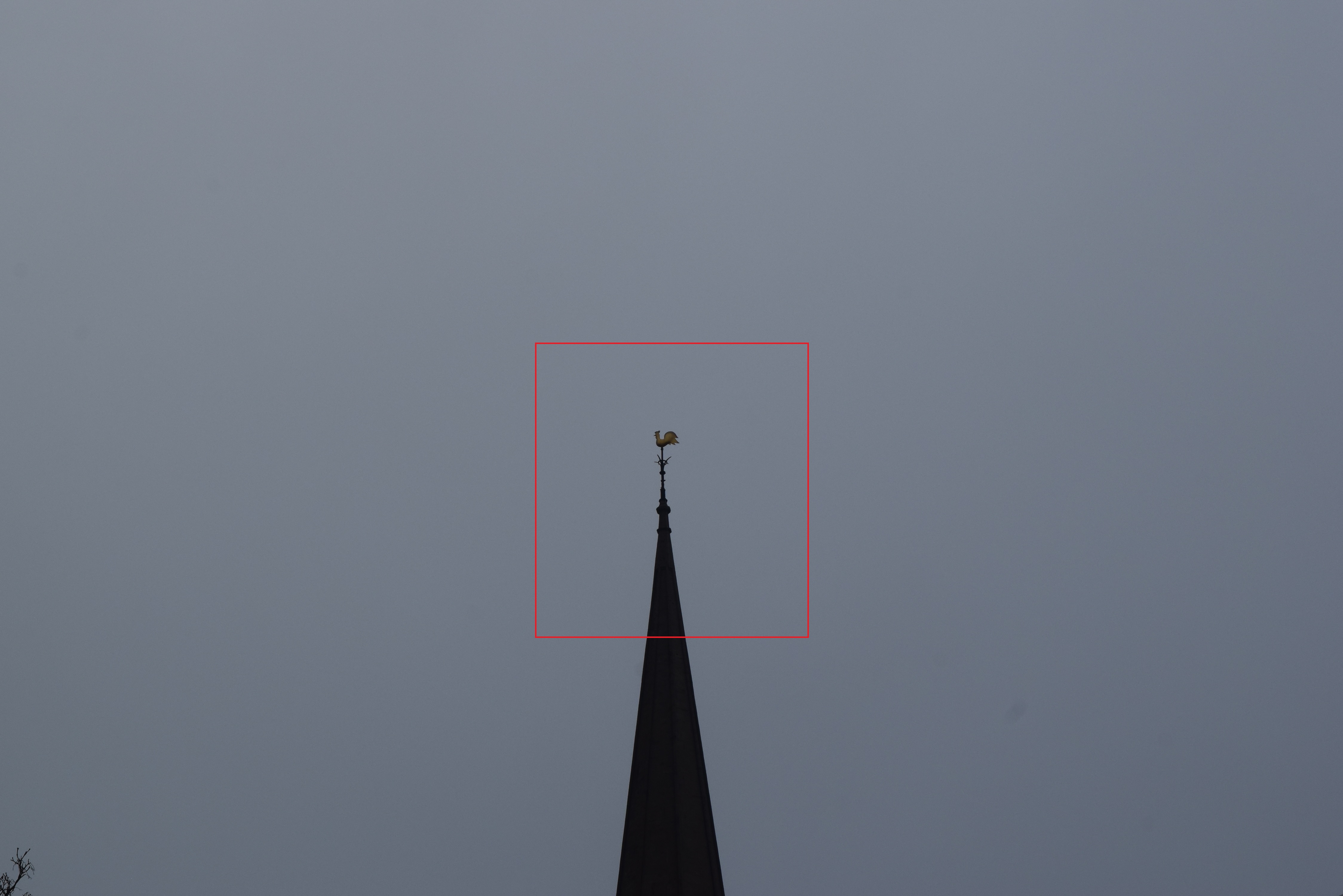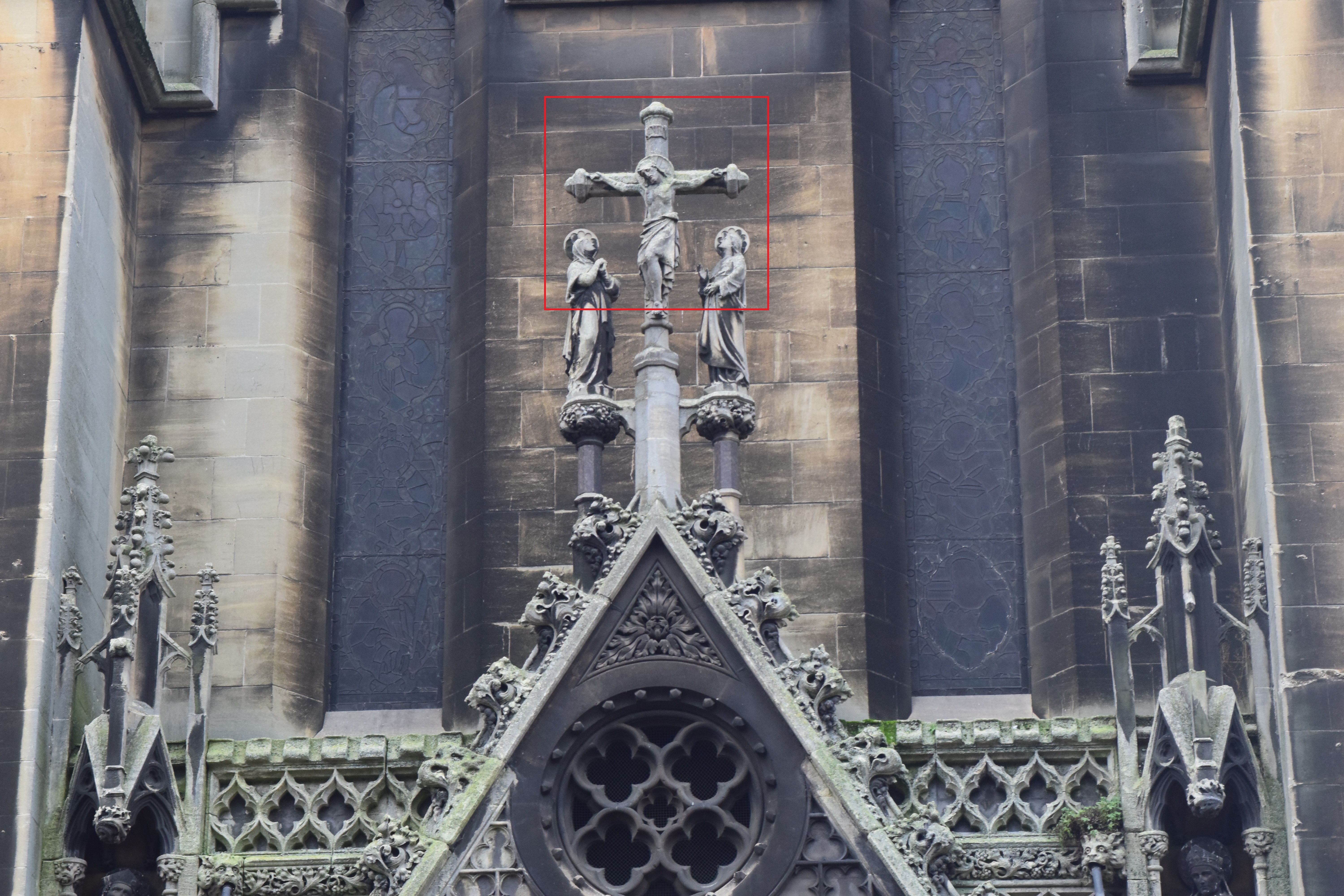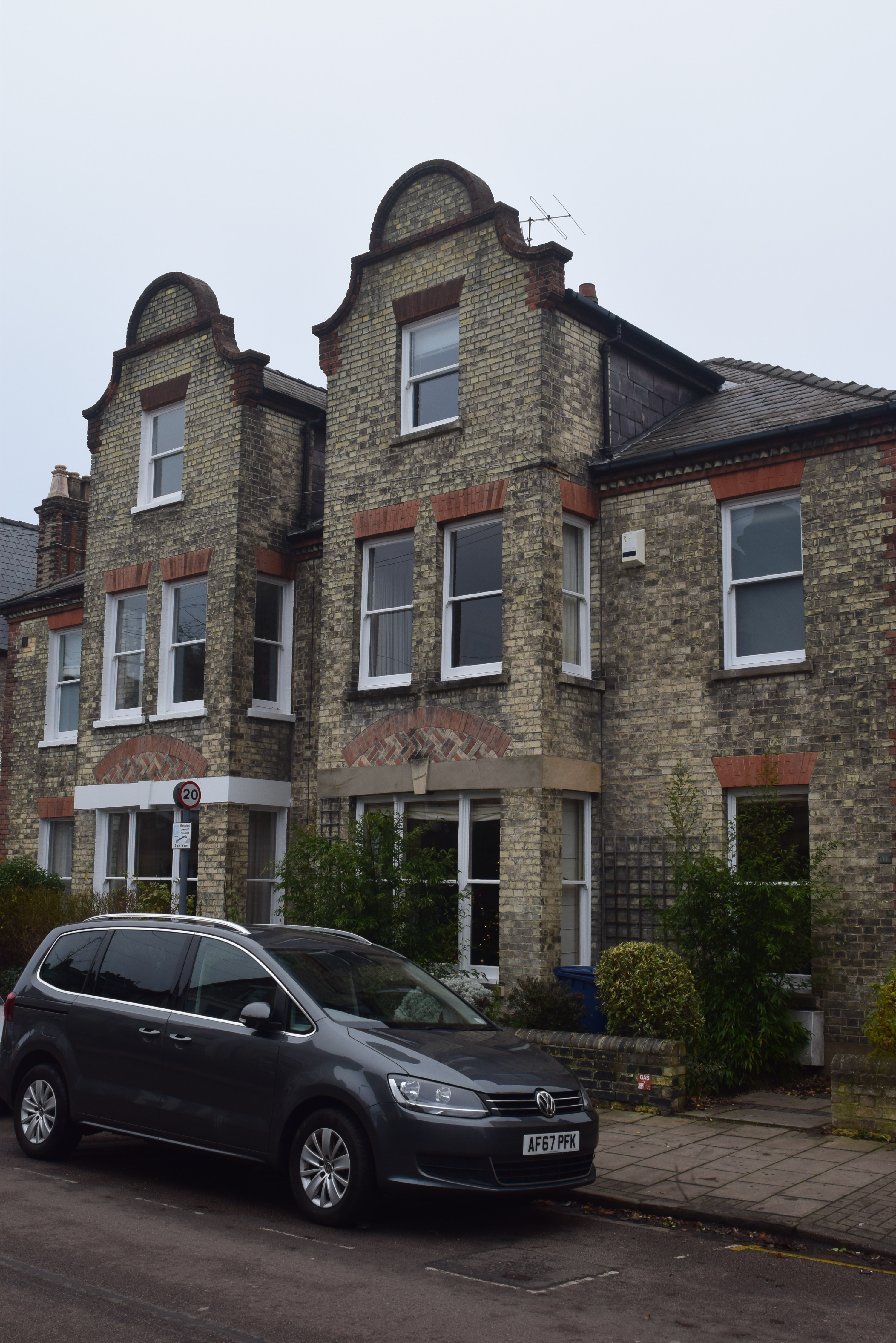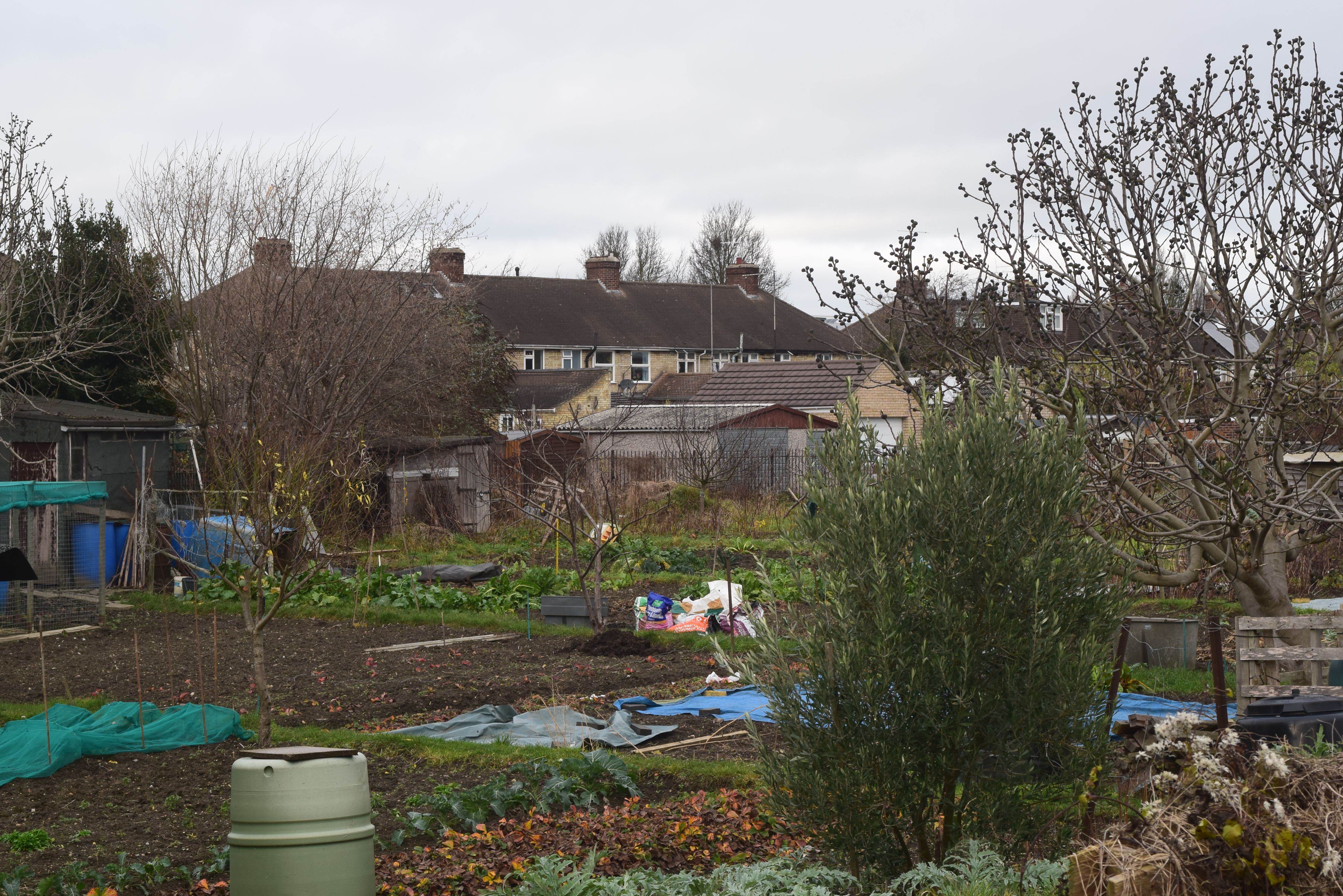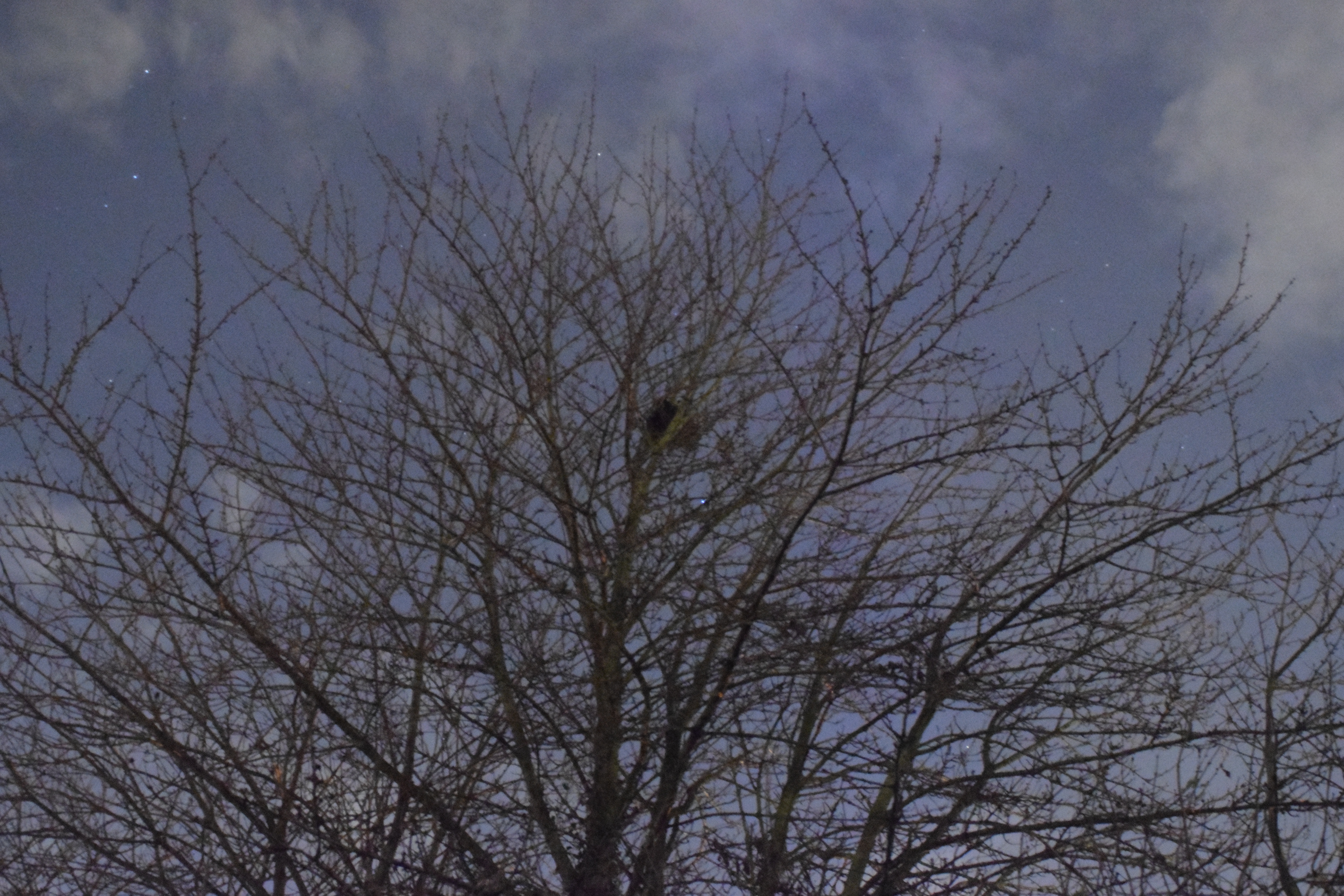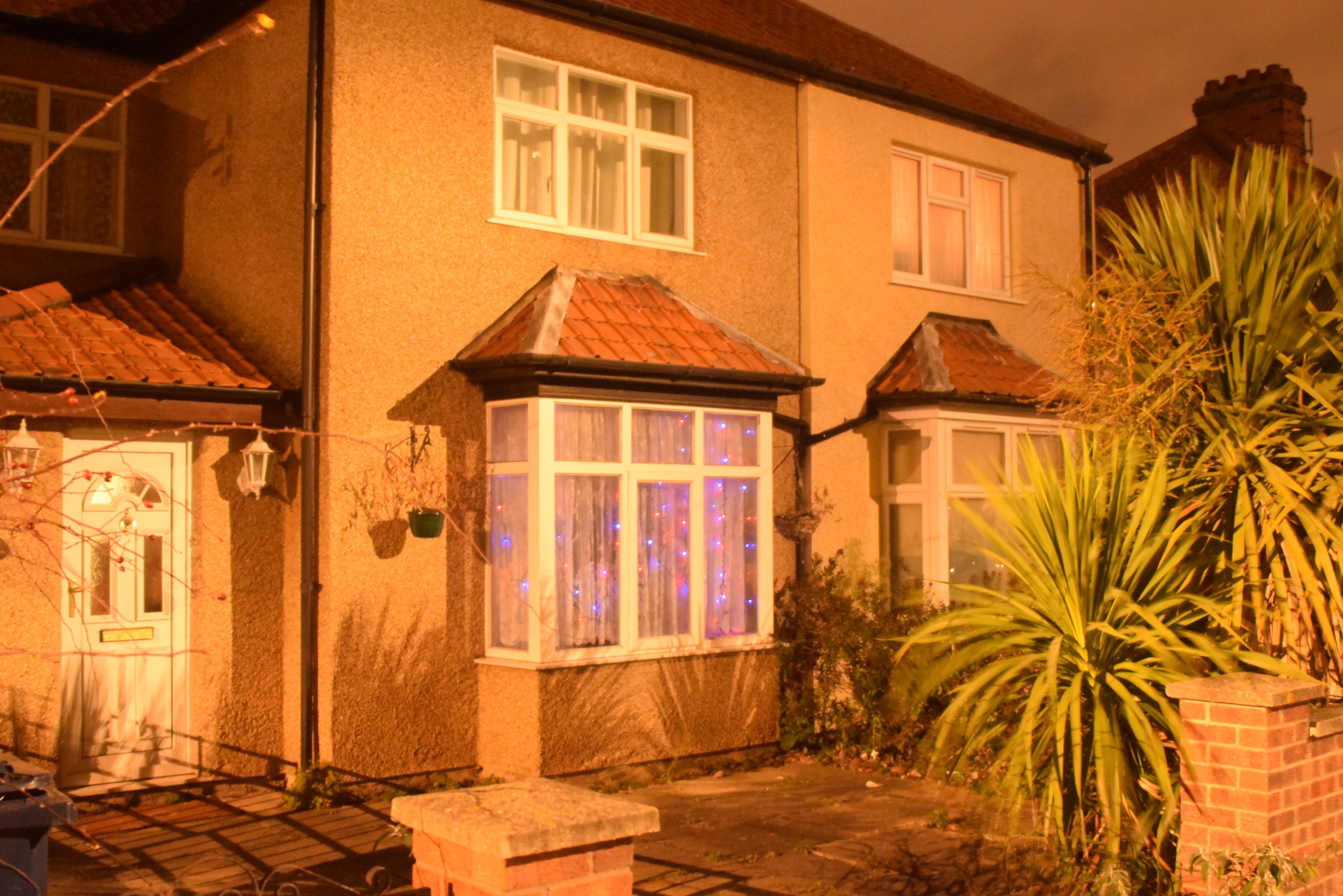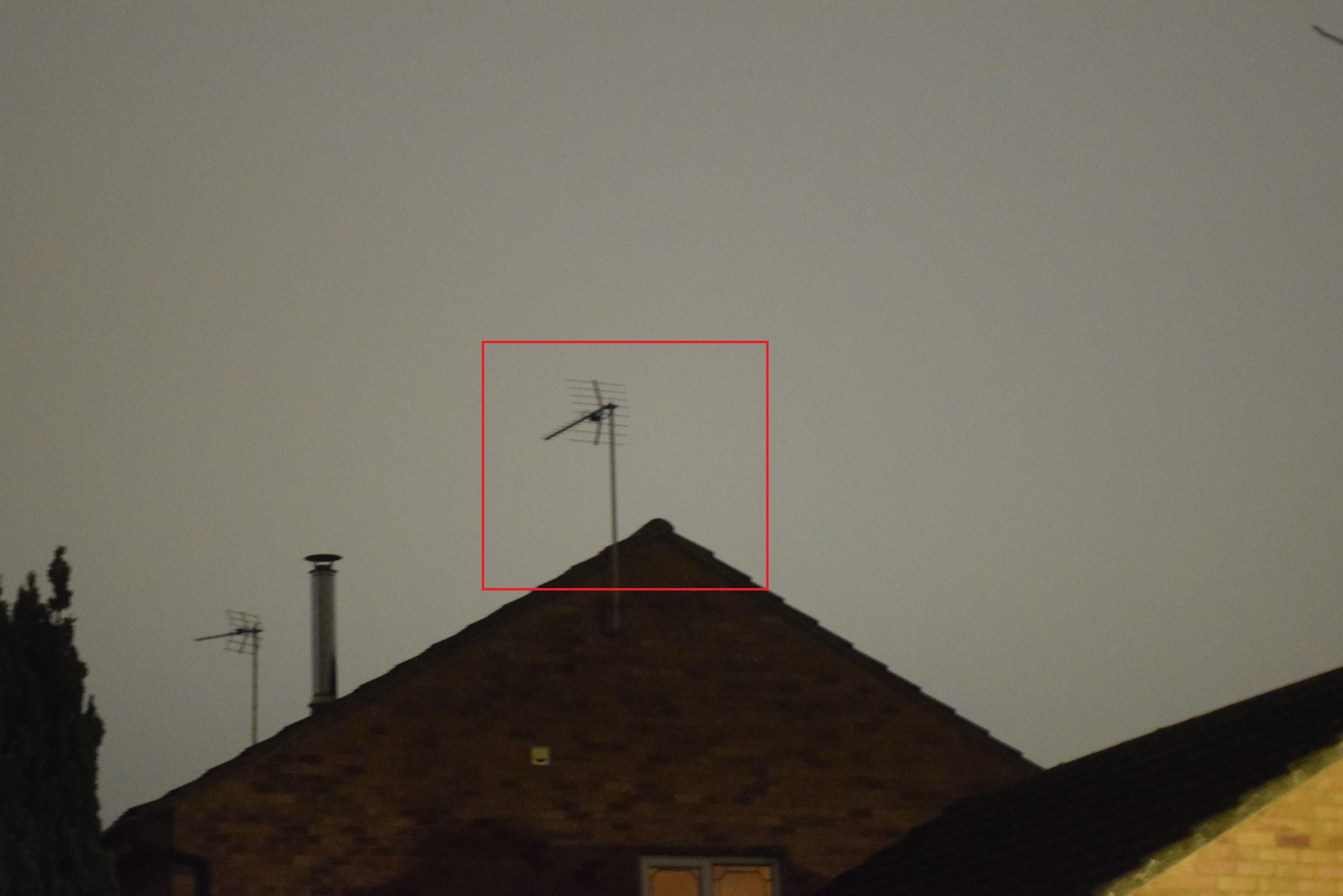Brief look on Sigma 24-70mm F2.8 EX DG Macro lens
When I gave the Nikkor 18-105mm lens back to the CEX shop I decided to buy something different. Coming across many lenses and different producers I found one, tailor-made for me at first glance. I have ordered through the webuy.com website the used Sigma 17-70mm F2.8 – 4.5 Macro lenses. Unfortunately, the lens, that I received was not fully operational, because the autofocus was completely broken. I decided to take it back to the CEX shop again. It put me in a bad mood however I didn’t want to give up. I ordered another sigma 17-70mm f2.8 – 4.5 Macro on the same evening.
After a few days, the delivery has come to me. Once I opened it I noticed, that this is not the lens, that I would like. It was a Sigma 24-70mm f2.8 EX DG Macro (Pic.1,2) rather than Sigma 17-70mm. Moreover, it wasn’t working too. Besides the broken autofocus I spotted a few fungi on the bottom glass (Pic. 3). Having 2 weeks to give this item back I took advantage of this occasion and made some tests. I would like to say you, that the photos made by this Sigma 24-70mm F2.8 EX DG Macro are not good. I was fighting with manual focus and with fungus also.
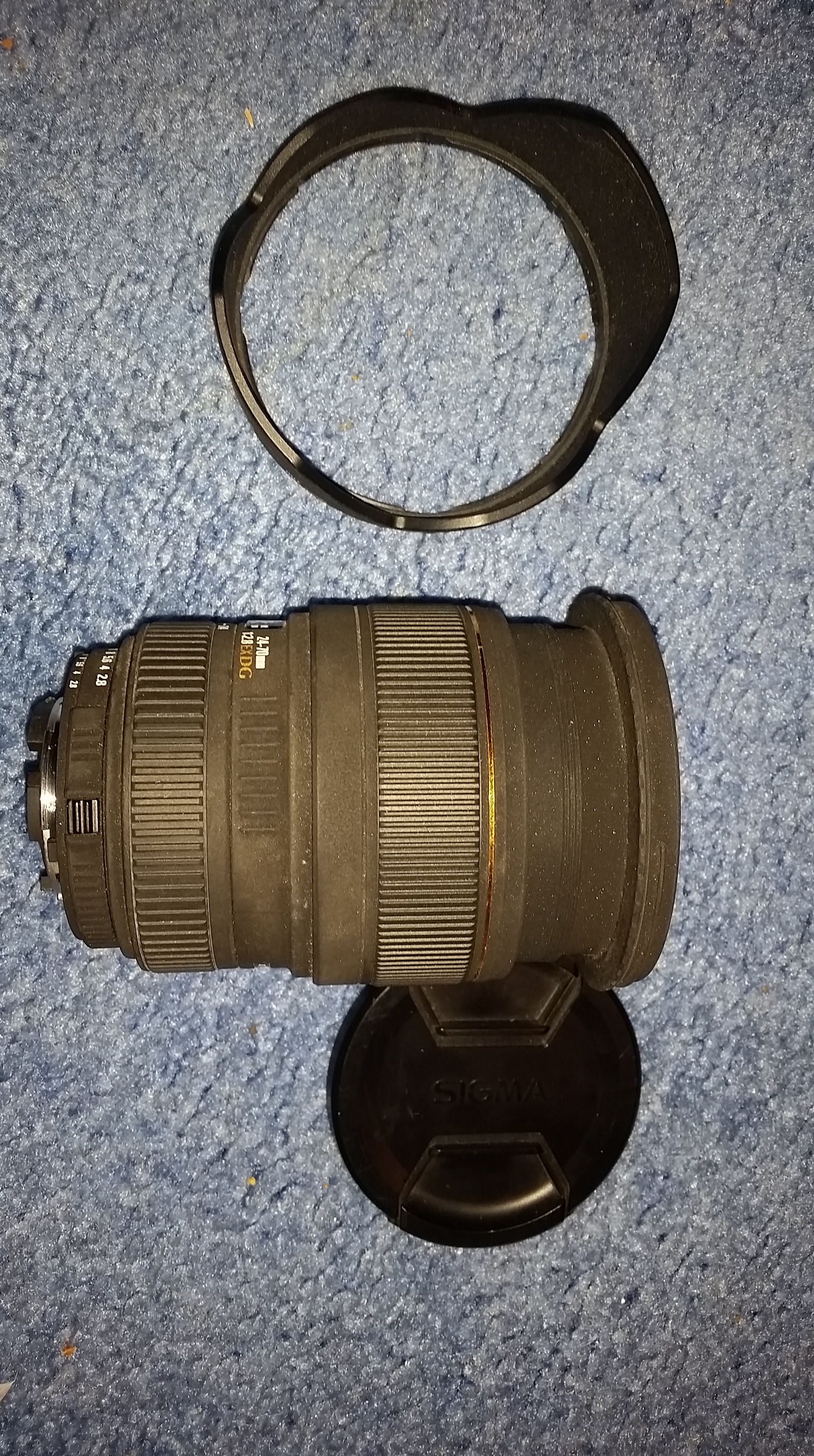

Pic. 1,2 Sigma 24-70mm F.2.8 HX DG Macro on the Nikon D5300 body.
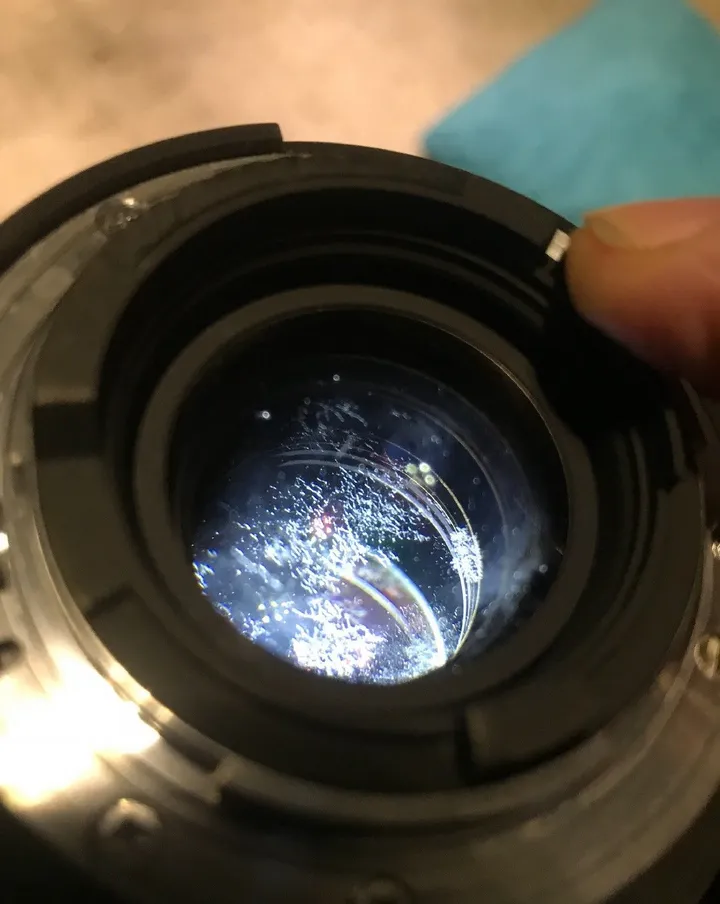
Pic. 3 Fungus, that covers the bottom glass of Sigma 24-70mm F2.8 EX DG Macro.
Before I start to describe the photo quality provided by Sigma 24-70mm I give you good advice: Don’t buy items in the CEX shop, at least from the website. It is definitely better when you can go to the shop and try it!
Using the Sigma 24-70mm F2.8 EX DG Macro I have focused on a few things. First of all, it is a lens with macro officially. Previously I had an occasion to work with Nikkor 18-55mm macro, which is generally not taken into account. I must admit, that it was one the best macro, that I have been fortunate to see, except the Sigma 17-70mm f2.8-4.5 macro, which I will describe soon. Contrasting both the Nikkor 18-55mm f3.5-5.6 VR II and Nikkor 18-105mm f3.5-5.6 VR this Sigma lens has the best one. The best example of it can see when comparing one plant in all lenses, that have been described. My example plant is the moss Polytrichum Commune, which is common in Britain (Pic. 4).

Pic. 4 The Polytrichum Commune moss as an example of macro comparison (all pictures have been cropped).
I have other examples with this plant to show you. See the pictures (Pic.5-8) below:


Pic. 5 – 8 The Polytrochium Communae (5,7 – normal; 6,8 – cropped pictures) captured by Sigma 24-70mm f2.8 EX DG.
Let’s take a look at other macro examples, without cropping (Pic. 9-12).
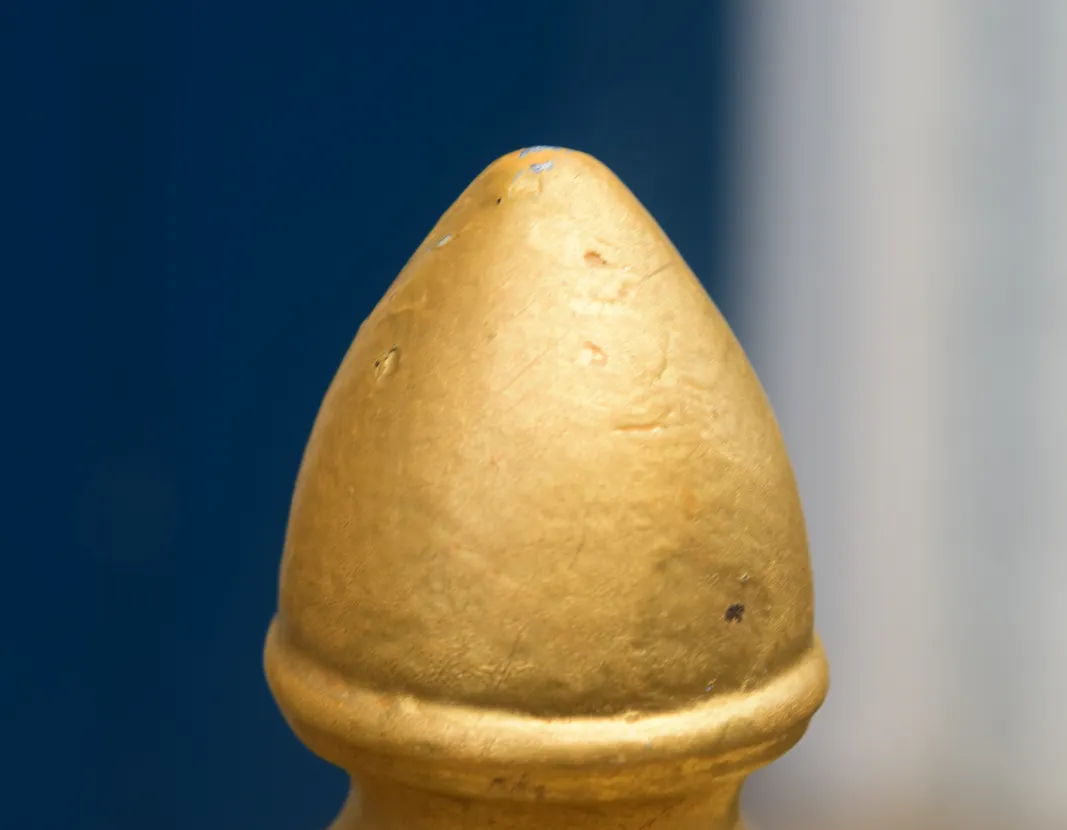
Pic. 9 – 12 The Sigma 24-70mm f2.8 EX DG Macro examples: 9 – Lime tree (Tilia) leaf buds, 10 – The Lorus watch, 11 – Cotoneaster Dammeri berries, 12 – Metal pinnacle.
In spite of quite a big minimal focusing distance, that counts 40 cm, being just a little bit shorter than the Nikkor 18-105mm the macro images are really good. Due to the lack of autofocus, I can say nothing about the chromatic aberration in the macro pictures. Some of them are not perfectly sharp too.
Another feature of this sigma is the zoom itself. This lens gives us the opportunity to take a photo up to 70mm. I have checked the quality of the photos done on the 70mm focal length. To be said they are really nice. Chromatic aberration almost does not exist, which is an excellent attitude (Pic. 13-16).
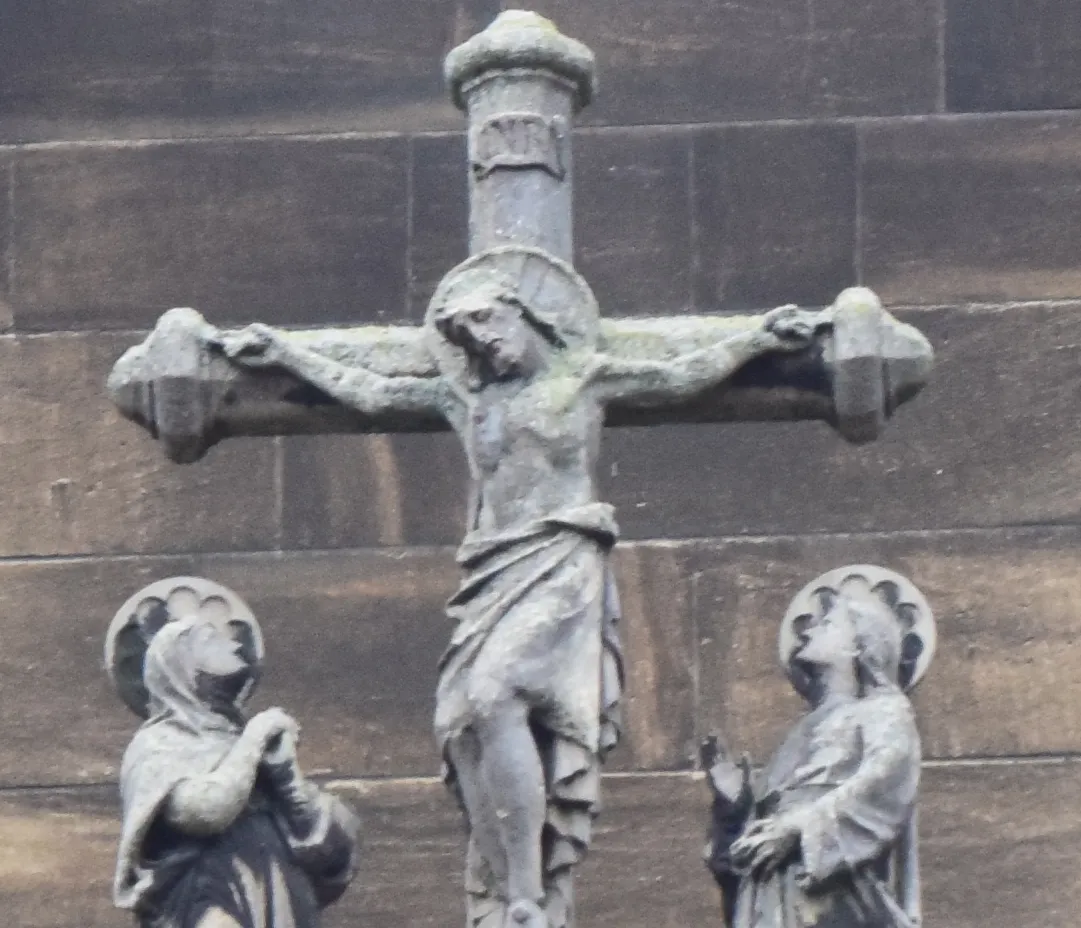
Pic. 13 – 16 The Sigma 24-70mm f2.8 EX DG Macro – 70mm photos example: 13,15 normal; 14,16 – cropped, Our Lady and the English Martyrs Catholic Church (OLEM), Cambridge.
As you can see there is no light falling in all the aforementioned pictures. All the photos are clear and sharp.
See another 70mm example below, without cropping (Pic. 17,18).

Pic. 18 The Regent’s street in Cambridge, view towards the Our Lady and the English Martyrs Catholic Church (OLEM),70mm f.10, 1/200s, ISO 400.
Let’s take a look at the other pictures taken by the Sigma 24-70mm f2.8 EX DG Macro. They are clear and sharp. Nothing to complain about I think.
The biggest attitude of the Sigma 24-70mm Macro lenses is definitely (for me) the aperture. This is only f/2.8 for a whole range. Thanks to this Sigma 24-70mm is perfect for night photography. I couldn’t make sharp photos however I have done my best. I found another advantage of this lens: as the length grows the focus doesn’t change, unlike Nikkor ones. This is great! Setting the manual focus value you can use it for the whole range of lengths offered.
Anyway, I took several photos during the night and in low light. The result is really nice. Even, when photos have been taken at the maximum length they keep good quality and brightness.
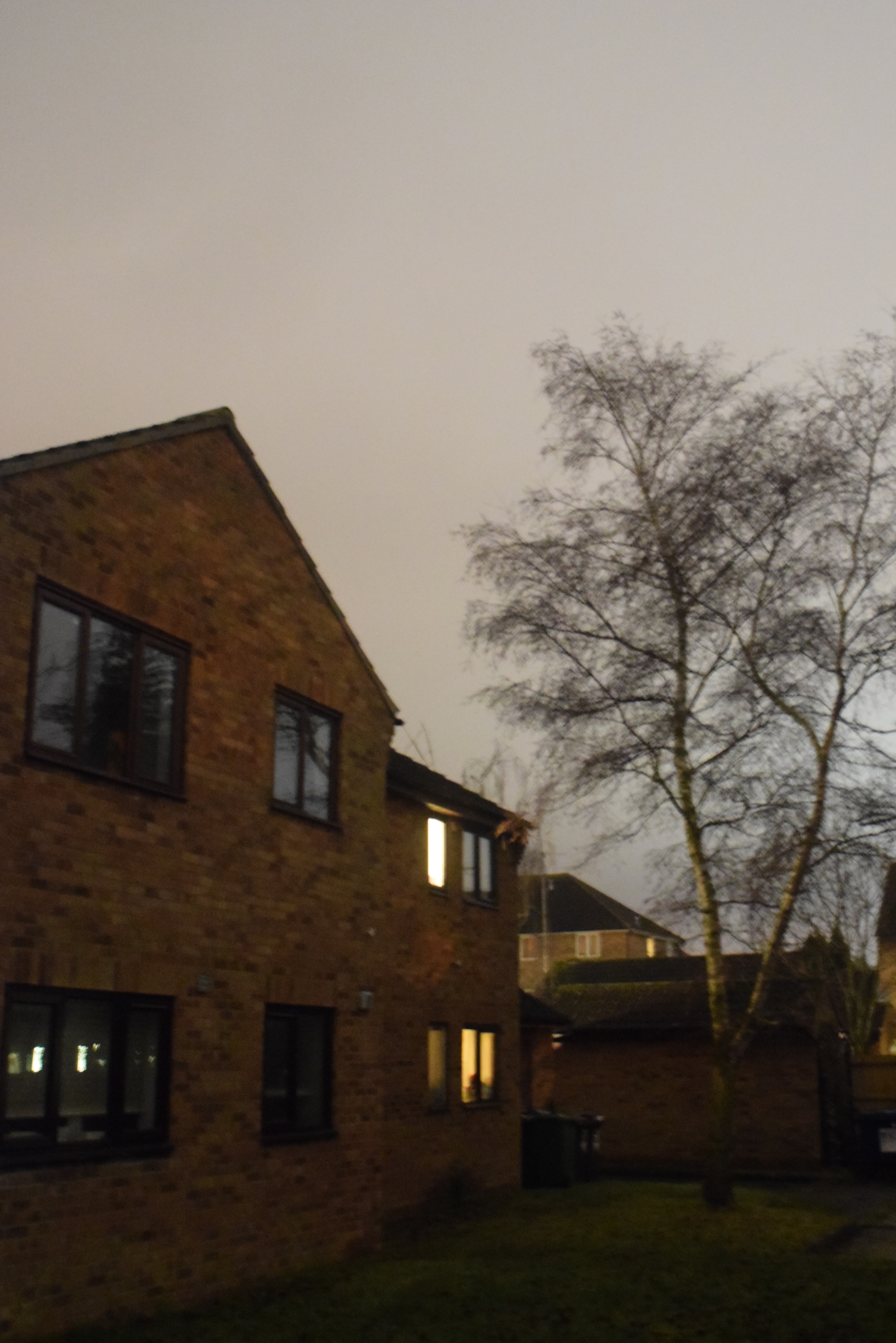
Pic. 24 Cambridge, 63 Corrie Road, a house, 24mm, f2.8, 1/2s, ISO 6400.
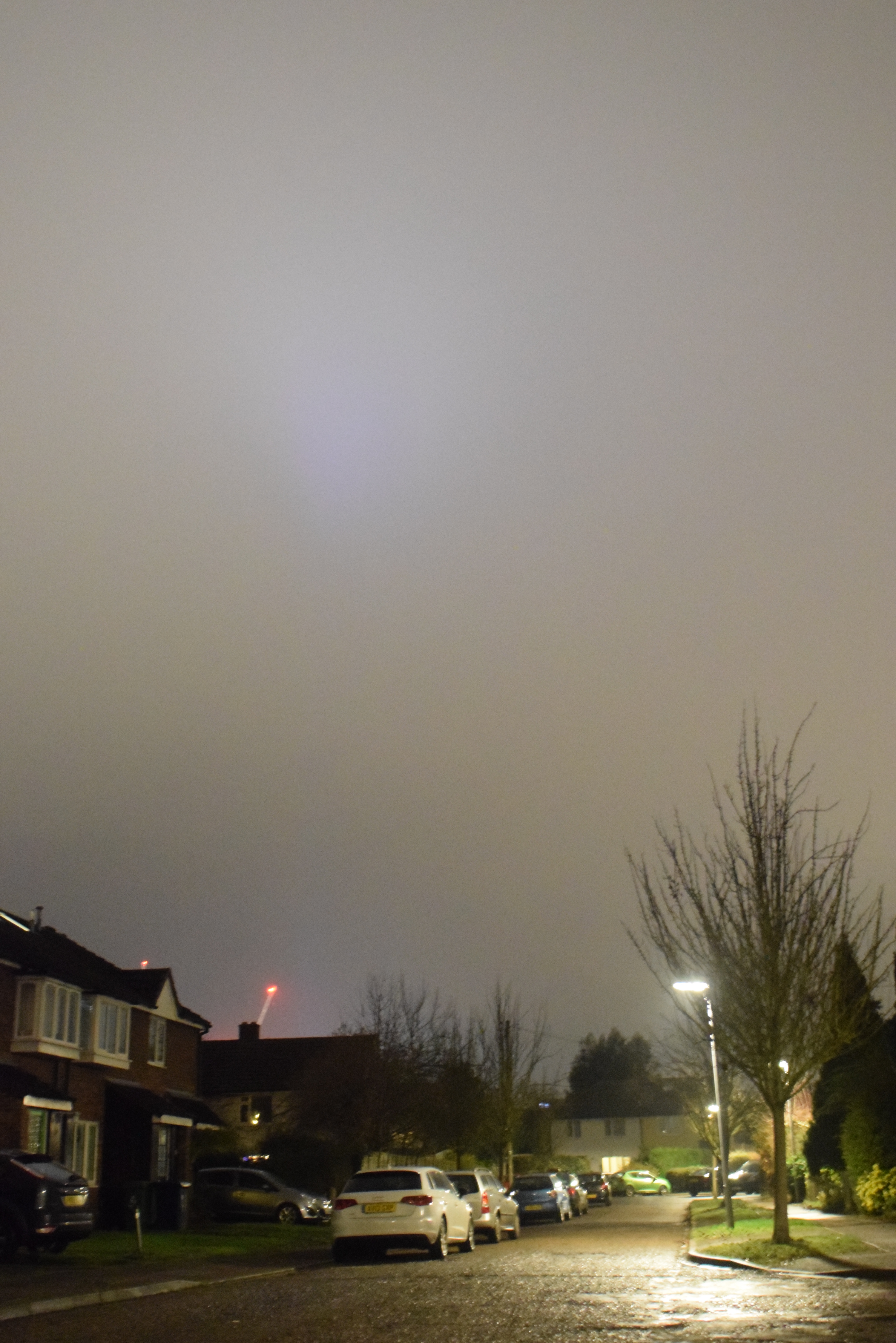
Pic. 25 Cambridge – Corrie road, 24mm, f2.8, 1/8s ISO 6400.

Pic. 27 The Christmas decoration around “The Lodge” building, Cherry Hinton Road, Cambridge, 24mm, f2.8, 1/30s ISO 1600.

Pic. 28 A bright, slightly overexposed night picture of the car, 24mm, f2.8 1s, ISO 12800.
Taking photos on maximal focal length may be a good pleasure in night conditions too (Pic. 29-30). I have chosen the sharpest picture I could gain using manual autofocus.
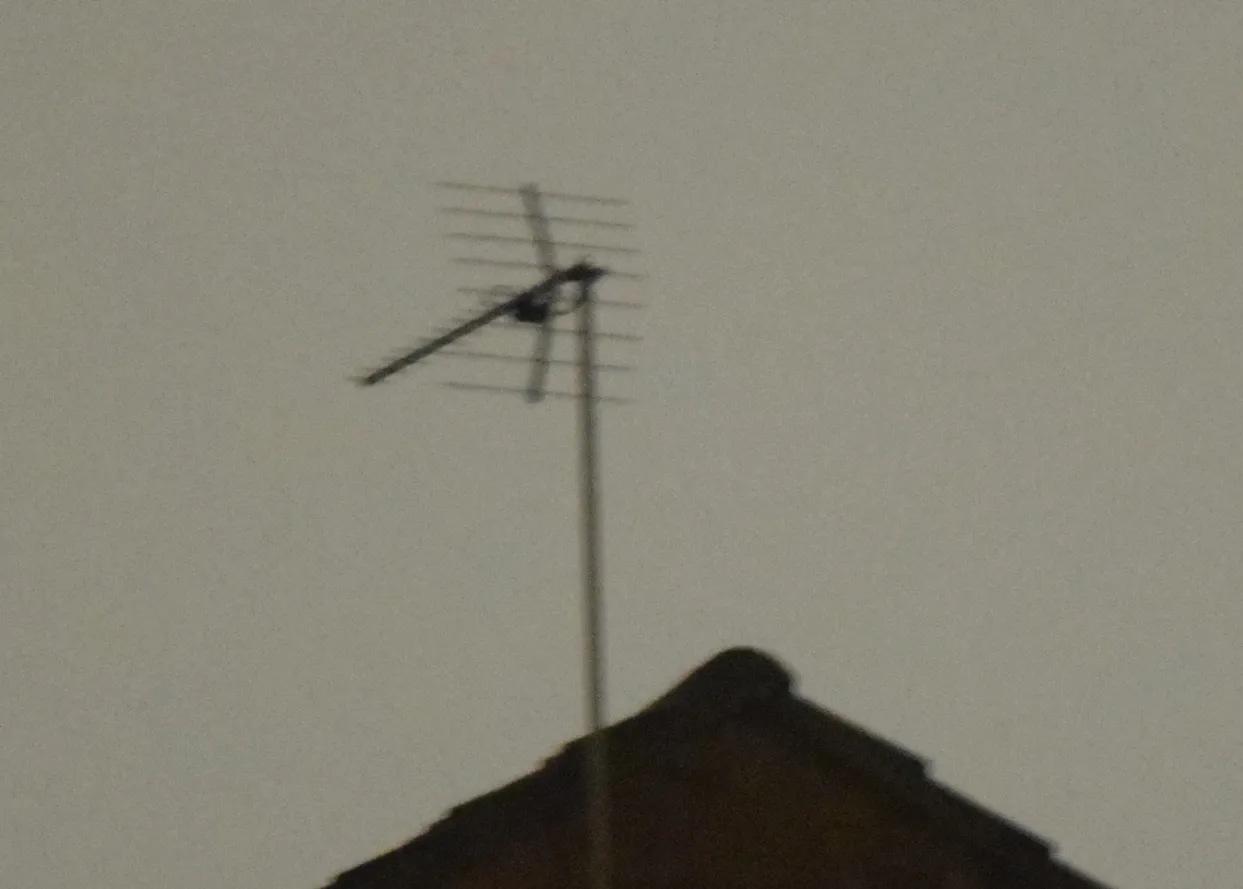
Pic. 29, 30 The yagi antenna TV at the rooftop on 55 Corrie Road, a house in Cambridge: 29 – normal, 30 – cropped, 70mm, f2.8, 1/8s ISO 8000.
The Sigma 24-70mm f2.8 EX DG is to be perfect for amateur astrophotography too. Even when you are in the city center and struggling with a high level of light pollution this lens can help you to gain decent sky images. I would prefer to use it for constellation photography. Remember, that if you do not owe a star adventurer the long-time exposure may affect your image and make the stars not sharp enough (in other words – dash-looking). Earth rotates, which causes a star movement. As long as you take fast-exposure photos you can receive a sharp image. During the longer exposures, you can see dash-looking stars.
Unfortunately, some sky photos are not appropriate due to the lack of autofocus and a tripod. Watch all below:

Pic. 31 The Aries constellation with the Hamal – the brightest star seen from Cambridge, 29mm, f2.8, 1/2s ISO 10000.
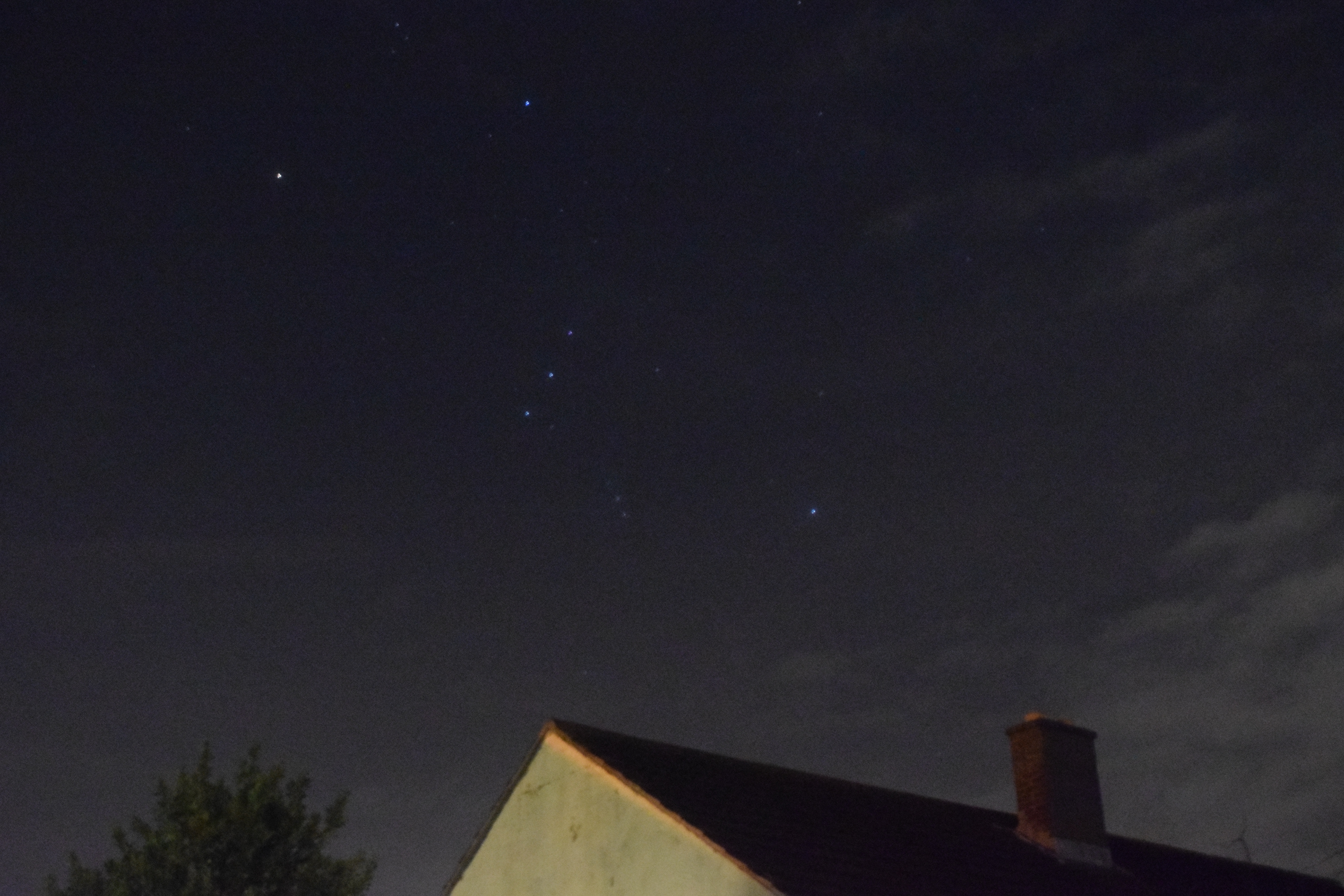
Pic. 32 Towering Orion constellation above 26 Corrie Road, a house in Cambridge, 24mm, f2.8, 1/2s, ISO 12800.
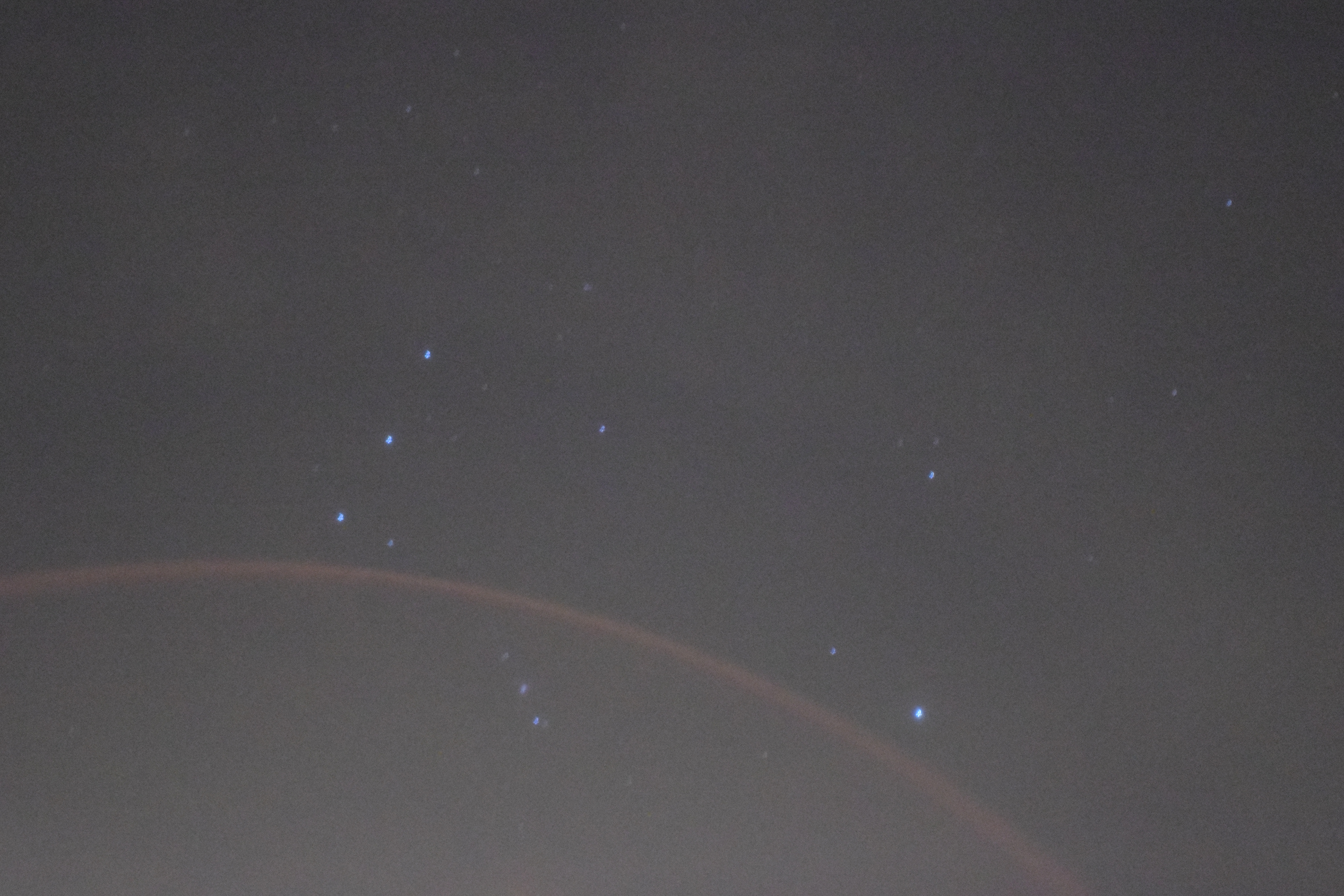
Pic. 33 The Orion constellation – close-up view with an accidental light bow, 70mm, f2.8, 1/2s, ISO 12800.
Pic. 33 shows, that light pollution may affect strongly the astrophoto quality. The parameters, that have been used to take this photo show the rough light level balance between a good star view and an overexposed sky section covered by artificial lighting.
As an outcome, I can recommend this lens to everyone, who wants to use it for night photography and make a close-up view of constellations and star clusters or remote objects. The f/2.8 aperture is completely tailored for it. Sigma 24-70mm is also good for taking other pictures and nice for macro. The one drawback is a lack of wide-angle features because the minimal focal length is 24mm. I have gotten used to taking “normal” pictures on an 18mm focal length hence using this lens was quite uncomfortable for me.
Mariusz Krukar
Links:
1. Sigma 24-70mm f2.8 Macro EX DG review
2. Sigma 24-70mm f2.8 EX DG Macro – dpreview.com
3. Check the lens photo quality against your camera.






